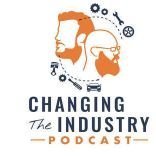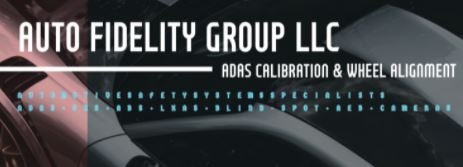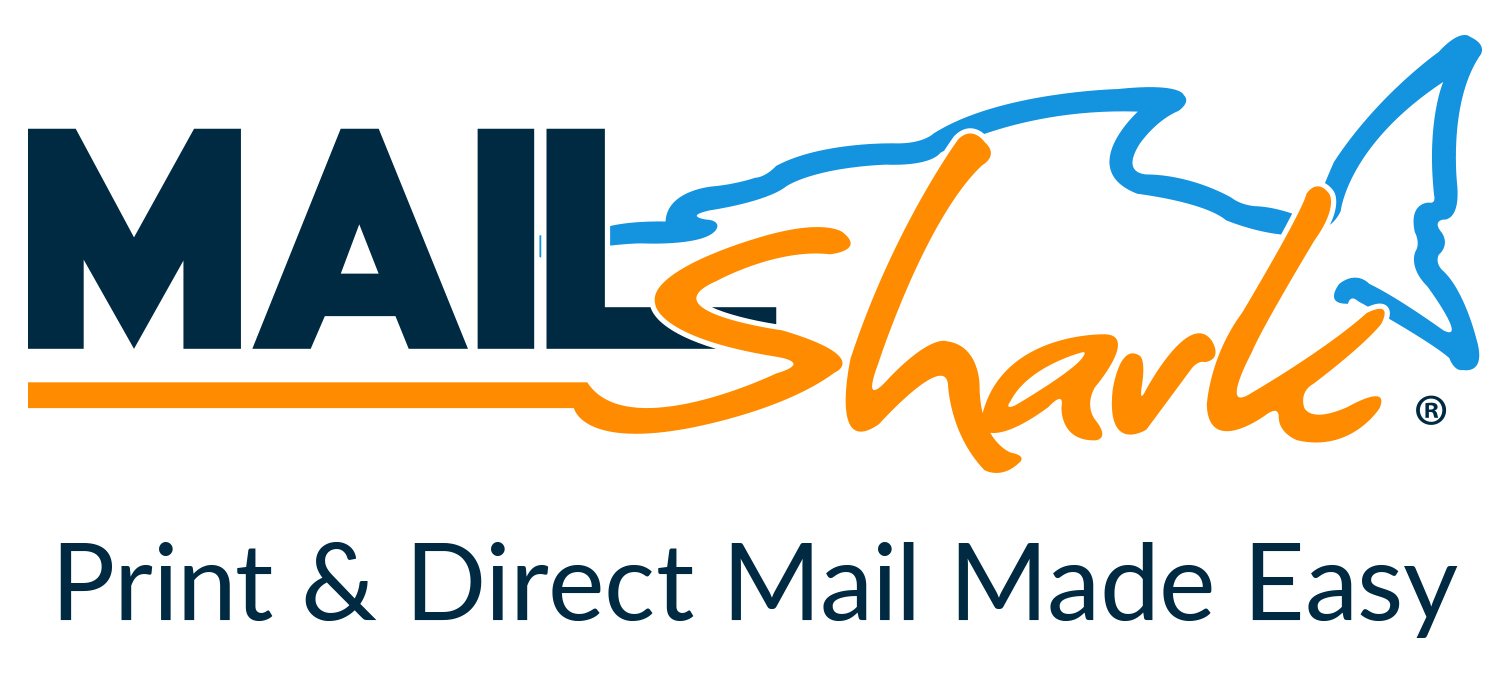Plan now for the future and boost sales
-
Available Subscriptions
-
Have you checked out Joe's Latest Blog?
-
By Joe Marconi in Joe's Blog0 commentsIt always amazes me when I hear about a technician who quits one repair shop to go work at another shop for less money. I know you have heard of this too, and you’ve probably asked yourself, “Can this be true? And Why?” The answer rests within the culture of the company. More specifically, the boss, manager, or a toxic work environment literally pushed the technician out the door.
While money and benefits tend to attract people to a company, it won’t keep them there. When a technician begins to look over the fence for greener grass, that is usually a sign that something is wrong within the workplace. It also means that his or her heart is probably already gone. If the issue is not resolved, no amount of money will keep that technician for the long term. The heart is always the first to leave. The last thing that leaves is the technician’s toolbox.
Shop owners: Focus more on employee retention than acquisition. This is not to say that you should not be constantly recruiting. You should. What it does means is that once you hire someone, your job isn’t over, that’s when it begins. Get to know your technicians. Build strong relationships. Have frequent one-on-ones. Engage in meaningful conversation. Find what truly motivates your technicians. You may be surprised that while money is a motivator, it’s usually not the prime motivator.
One last thing; the cost of technician turnover can be financially devastating. It also affects shop morale. Do all you can to create a workplace where technicians feel they are respected, recognized, and know that their work contributes to the overall success of the company. This will lead to improved morale and team spirit. Remember, when you see a technician’s toolbox rolling out of the bay on its way to another shop, the heart was most likely gone long before that.
-
-
Similar Topics
-
By Changing The Industry
Episode 211 - Trust, Ownership, and Ethical Sales with Kim and Brian Walker of Shop Marketing Pros
-
By carmcapriotto
The Weekly Blitz is brought to you by our friends over at Shop Marketing Pros. If you want to take your shop to the next level, you need great marketing. Shop Marketing Pros does top-tier marketing for top-tier shops.
Click here to learn more about Top Tier Marketing by Shop Marketing Pros and schedule a demo: https://shopmarketingpros.com/chris/
Check out their podcast here: https://autorepairmarketing.captivate.fm/
If you would like to join their private facebook group go here: https://www.facebook.com/groups/autorepairmarketingmastermind
SHOW NOTES
Throughout the episode, Coach Chris covers a range of pivotal topics that are crucial for business growth and sustainability. He discusses the potential benefits of real estate investments, drawing parallels to the Monopoly board where acquiring properties can lead to increased revenue and long-term financial gains. Additionally, he explores the concept of financial diversification, encouraging shop owners to explore various avenues for generating income beyond their core services.
A significant portion of the discussion is dedicated to the value of forming strategic partnerships and investing in employee development. Coach Chris emphasizes that nurturing relationships with other businesses and fostering a skilled workforce can lead to enhanced service offerings and a competitive edge in the market. He also highlights the critical role of cash flow management, advising shop owners on how to maintain a healthy financial status that supports both day-to-day operations and future growth initiatives.
Strategic expansion is another key theme, with Coach Chris providing insights on how to scale operations thoughtfully and sustainably. By aligning expansion efforts with clearly defined business objectives, shop owners can achieve financial stability and set the stage for long-term success.
Introduction and Overview (00:00:09)
Coach Chris Cotton introduces the podcast and its focus on auto repair business strategies.
Monopoly Metaphor (00:01:05)
Chris uses Monopoly to illustrate strategic business management and growth opportunities for shop owners.
Defining Your Business Size (00:02:03)
Discussion on ambitions regarding the size of the business—local, regional, or national expansion goals.
Opportunities for Growth (00:03:12)
Encouragement to view business opportunities as "squares" on a Monopoly board, representing growth potential.
Real Estate Investments (00:04:25)
The benefits of owning property, including passive income and stability for the auto repair business.
Diversification of Income Streams (00:05:28)
Exploration of additional income sources like storage facilities and rental properties to enhance financial security.
Financial Investments (00:06:41)
Importance of stocks and retirement accounts for long-term financial growth and stability beyond the auto industry.
Flexibility in Business Strategy (00:07:58)
The need for adaptability in response to unexpected challenges and opportunities in the business landscape.
Strategic Partnerships (00:08:41)
Value of collaborations with suppliers and other businesses to create growth opportunities and enhance profitability.
Employee Development (00:09:04)
Investing in team training and development as a critical factor for business success and employee retention.
Connect with Chris: chris autofixsos.com
Phone: 940.400.1008
www.autoshopcoaching.com
Facebook: https://www.facebook.com/
AutoFixAutoShopCo
Connect with Chris: chris autofixsos.com Phone: 940.400.1008 www.autoshopcoaching.com Facebook: https://www.facebook.com/ AutoFixAutoShopCoachingYoutube: https://bit.ly/3ClX0ae
www.autoshopcoaching.com
Facebook: https://www.facebook.com/ AutoFixAutoShopCoaching
Youtube: https://bit.ly/3ClX0ae
The Aftermarket Radio Network
Remarkable Results Radio Podcast with Carm Capriotto: Advancing the Aftermarket by Facilitating Wisdom Through Story Telling and Open Discussion
Diagnosing the Aftermarket A to Z with Matt Fanslow: From Diagnostics to Metallica and Mental Health, Matt Fanslow is Lifting the Hood on Life.
The Auto Repair Marketing Podcast with Kim and Brian Walker: Marketing Experts Brian & Kim Walker Work with Shop Owners to Take it to the Next Level.
The Weekly Blitz with Chris Cotton: Weekly Inspiration with Business Coach Chris Cotton from AutoFix - Auto Shop Coaching.
Business by the Numbers with Hunt Demarest: Understand the Numbers of Your Business with CPA Hunt Demarest.
Speak Up! Effective Communication with Craig O'Neill: Develop Interpersonal and Professional Communication Skills when Speaking to Audiences of Any Size.
To listen to more episodes, make sure and go over to iTunes and or Spotify.
Don't forget to rate and review us!
Connect with Chris:
AutoFix-Auto Shop Coaching
www.autoshopcoaching.com
www.aftermarketradionetwork.com
#autofixautoshopcoaching #autofixbeautofixing #autoshopprofits #autoshopprofit #autoshopprofitsfirst #autoshopleadership #autoshopmanagement #autorepairshopcoaching #autorepairshopconsulting #autorepairshoptraining #autorepairshop #autorepair #serviceadvisor #serviceadvisorefficiency #autorepairshopmarketing #theweeklyblitz #autofix #shopmarketingpros #autofixautoshopcoachingbook
Click to go to the Podcast on Remarkable Results Radio
-
By carmcapriotto
Thanks to our partners, NAPA TRACS and Promotive
“Do I have enough to retire?”
It’s the question every business owner eventually asks—but most never answer. In this episode, Hunt breaks down why your retirement isn’t about hitting a number… it’s about building a life you don’t need to escape from.
What You'll Learn:
Why there’s no universal retirement number (and what to focus on instead) The simple formula to estimate how much you really need How Social Security, real estate, and your business really factor in The danger of carrying debt into retirement What the book Die With Zero teaches us about using our time and money wisely
Thanks to our partner, NAPA TRACS
Did you know that NAPA TRACS has onsite training plus six days a week support?
It all starts when a local representative meets with you to learn about your business and how you run it. After all, it's your shop, so it's your choice.
Let us prove to you that Tracs is the single best shop management system in the business. Find NAPA TRACS on the Web at NAPATRACS.com
Thanks to our partner, Promotive
It’s time to hire a superstar for your business; what a grind you have in front of you. Introducing Promotive, a full-service staffing solution for your shop. Promotive has over 40 years of recruiting and automotive experience. If you need qualified technicians and service advisors and want to offload the heavy lifting, visit www.gopromotive.com.
Paar Melis and Associates – Accountants Specializing in Automotive Repair
Visit us Online: www.paarmelis.com
Email Hunt: [email protected]
Text Paar Melis @ 301-307-5413
Download a Copy of My Books Here:
Wrenches to Write-Offs Your Perfect Shop
The Aftermarket Radio Network: https://aftermarketradionetwork.com/
Remarkable Results Radio Podcast with Carm Capriotto https://remarkableresults.biz/
Diagnosing the Aftermarket A to Z with Matt Fanslow https://mattfanslow.captivate.fm/
Business by the Numbers with Hunt Demarest https://huntdemarest.captivate.fm/
The Auto Repair Marketing Podcast with Kim and Brian Walker https://autorepairmarketing.captivate.fm/
The Weekly Blitz with Chris Cotton https://chriscotton.captivate.fm/
Speak Up! Effective Communication with Craig O'Neill https://craigoneill.captivate.fm/
The Aftermarket Radio Network
Remarkable Results Radio Podcast with Carm Capriotto: Advancing the Aftermarket by Facilitating Wisdom Through Story Telling and Open Discussion
Diagnosing the Aftermarket A to Z with Matt Fanslow: From Diagnostics to Metallica and Mental Health, Matt Fanslow is Lifting the Hood on Life.
The Auto Repair Marketing Podcast with Kim and Brian Walker: Marketing Experts Brian & Kim Walker Work with Shop Owners to Take it to the Next Level.
The Weekly Blitz with Chris Cotton: Weekly Inspiration with Business Coach Chris Cotton from AutoFix - Auto Shop Coaching.
Business by the Numbers with Hunt Demarest: Understand the Numbers of Your Business with CPA Hunt Demarest.
Speak Up! Effective Communication with Craig O'Neill: Develop Interpersonal and Professional Communication Skills when Speaking to Audiences of Any Size.
Click to go to the Podcast on Remarkable Results Radio
-
By nptrb
Premium Member Content
This content is hidden to guests, one of the benefits of a paid membership. Please login or register to view this content.
-
-
By carmcapriotto
Thanks to our Partners, NAPA Auto Care, NAPA TRACS and Automotive Management Network Recorded at the 45th annual Mobile Air Climate Systems Conference (MACS 2025) in Orlando, Florida, Rob Bollinger shares the unique story of his third-generation family business, emphasizing their commitment to personal service and the legacy of his grandfather, who invented the overflow bottle system. The discussion also touches upon industry trends, the challenges of price competition, the evolution of AC systems with electric vehicles, and Bollinger's future plans for the business. Rob Bollinger, ABC Radiator, Baltimore, MD. https://www.facebook.com/abcradiator401 Show Notes Watch Full Video Episode MACS Training Event & Trade Show: https://macsmobileairclimate.org/ National Automotive Service Task Force (NASTF): https://wp.nastf.org/ Koura: https://www.kouraglobal.com/ Honeywell: https://www.honeywell.com/us/en Introduction to MAC Conference (00:00:00) Guest Introduction: Rob Bollinger (00:02:17) Rob's Family Business Legacy (00:02:52) Personal Touch in Deliveries (00:03:52) Customer Engagement During Deliveries (00:04:30) Rob's Background in the Business (00:06:08) Regrets About Family Business (00:06:22) Coolant Reservoir Bottle Invention (00:07:40) Patenting the Invention (00:08:25) Legacy of the Invention (00:09:48) Cash vs. Cashless Transactions (00:10:05) Honesty in Business (00:15:46) Future of Specialty Shops (00:16:20) Customer Outreach (00:16:30) Changes in Radiator Industry (00:16:54) Hiring Challenges (00:18:11) Golfing and Business Balance (00:18:39) AC Industry Challenges (00:20:10) Leak Detection Methods (00:20:57) Future Plans (00:21:50) Real Estate and Business Stability (00:22:28) Family Support (00:23:33) Training and Industry Updates (00:24:26) Vendor Interaction at Conferences (00:25:08) AI Repair Discussion (00:25:55) Reflection on the Conversation (00:26:09)
Thanks to our Partners, NAPA Auto Care, NAPA TRACS and Automotive Management Network Learn more about NAPA Auto Care and the benefits of being part of the NAPA family by visiting https://www.napaonline.com/en/auto-care NAPA TRACS will move your shop into the SMS fast lane with onsite training and six days a week of support and local representation. Find NAPA TRACS on the Web at http://napatracs.com/ Get ready to grow your business with the Automotive Management Network: Find on the Web at http://AftermarketManagementNetwork.com for information that can help you move your business ahead and for the free and informative http://LaborRateTracker.com Connect with the Podcast: -Follow on Facebook: https://www.facebook.com/RemarkableResultsRadioPodcast/ -Join Our Virtual Toastmasters Club: https://remarkableresults.biz/toastmasters -Join Our Private Facebook Community: https://www.facebook.com/groups/1734687266778976 -Subscribe on YouTube: https://www.youtube.com/carmcapriotto -Follow on LinkedIn: https://www.linkedin.com/in/carmcapriotto/ -Follow on Instagram: https://www.instagram.com/remarkableresultsradiopodcast/ -Follow on Twitter: https://twitter.com/RResultsBiz -Visit the Website: https://remarkableresults.biz/ -Join our Insider List: https://remarkableresults.biz/insider -All books mentioned on our podcasts: https://remarkableresults.biz/books -Our Classroom page for personal or team learning: https://remarkableresults.biz/classroom -Buy Me a Coffee: https://www.buymeacoffee.com/carm -Special episode collections: https://remarkableresults.biz/collections The Aftermarket Radio Network: https://aftermarketradionetwork.com/ Remarkable Results Radio Podcast with Carm Capriotto: Advancing the Aftermarket by Facilitating Wisdom Through Story Telling and Open Discussion. https://remarkableresults.biz/ Diagnosing the Aftermarket A to Z with Matt Fanslow: From Diagnostics to Metallica and Mental Health, Matt Fanslow is Lifting the Hood on Life. https://mattfanslow.captivate.fm/ Business by the Numbers with Hunt Demarest: Understand the Numbers of Your Business with CPA Hunt Demarest. https://huntdemarest.captivate.fm/ The Auto Repair Marketing Podcast with Kim and Brian Walker: Marketing Experts Brian & Kim Walker Work with Shop Owners to Take it to the Next Level. https://autorepairmarketing.captivate.fm/ The Weekly Blitz with Chris Cotton: Weekly Inspiration with Business Coach Chris Cotton from AutoFix - Auto Shop Coaching. https://chriscotton.captivate.fm/ Speak Up! Effective Communication with Craig O'Neill: Develop Interpersonal and Professional Communication Skills when Speaking to Audiences of Any Size. https://craigoneill.captivate.fm/ Click to go to the Podcast on Remarkable Results Radio
-
-
-
Our Sponsors

















Recommended Posts
Create an account or sign in to comment
You need to be a member in order to leave a comment
Create an account
Sign up for a new account in our community. It's easy!
Register a new accountSign in
Already have an account? Sign in here.
Sign In Now